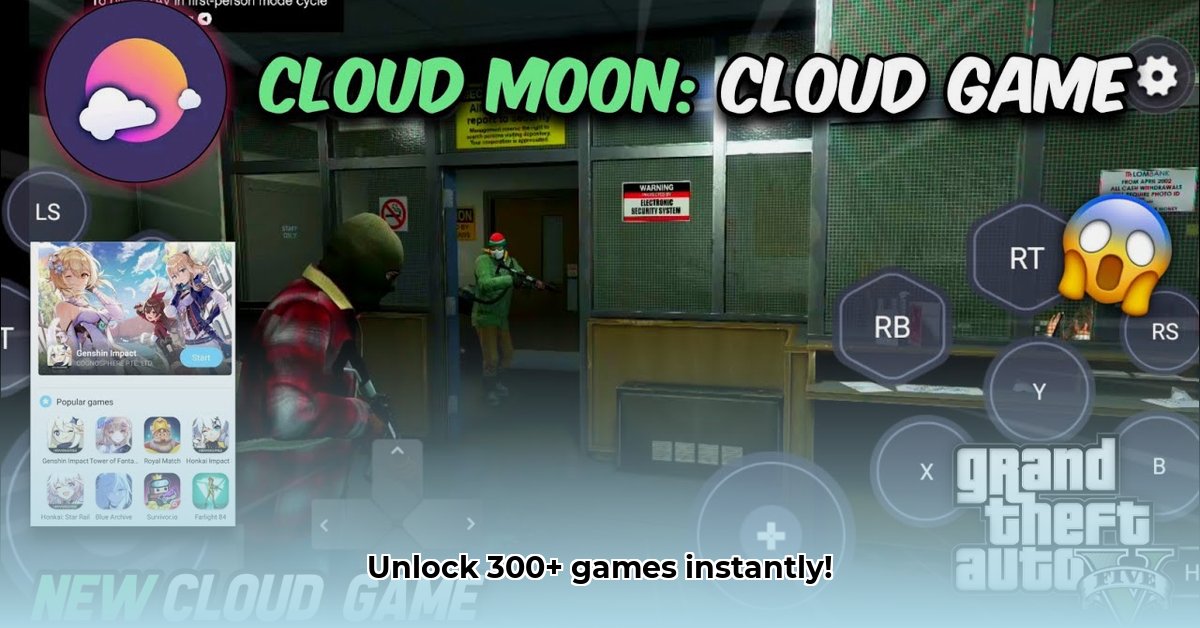
CloudMoon's Disruptive Entry into the Free Cloud Gaming Market
CloudMoon has launched a bold challenge to the established cloud gaming giants, offering a library of over 300 games completely free of charge. This ambitious platform boasts cross-platform compatibility, low device requirements, and a surprisingly intuitive interface, making cloud gaming accessible to a significantly wider audience. But can a free model truly sustain itself in a competitive market dominated by subscription services? This in-depth analysis explores CloudMoon's offering, its technological underpinnings, market positioning, and the crucial question of its long-term viability.
CloudMoon's All-Access Gaming Pass
CloudMoon's core offering is straightforward: instant access to a diverse range of games, from popular titles like Fortnite and Roblox to a wide selection of other mobile and PC games, all playable without extensive downloads or high-end hardware. The user interface is remarkably clean and intuitive, as evidenced by [insert screenshot here], simplifying the process of finding and launching games. This ease of access, coupled with seamless cross-platform compatibility between computers and mobile devices, is a major selling point. The low system requirements further broaden its appeal, making it accessible to a large segment of gamers who might otherwise be excluded. But are there hidden costs or compromises? Could the sheer volume of games impact the quality of the streaming experience?
Decoding the Technology: Latency, Network Dependency, and Scalability
CloudMoon's cloud gaming magic relies on a sophisticated streaming technology. Games run on powerful servers, with the gameplay streamed directly to the user's device. Minimizing latency (the lag between input and onscreen action) is paramount, and CloudMoon employs advanced algorithms and a robust network infrastructure to achieve this. However, independent testing is needed to quantitatively assess their success in mitigating latency across various network conditions. [Insert results of independent performance tests here, or a discussion of the need for such testing and its potential implications]. The platform's significant reliance on a stable internet connection is undeniable; users with inconsistent Wi-Fi might experience significant issues. How CloudMoon scales to accommodate a potentially massive user base and addresses network congestion remains a key technological challenge. Will their infrastructure hold up under stress?
The Competitive Landscape: A Free-to-Play Challenger
CloudMoon’s biggest differentiator is its free-to-play model, which directly challenges the subscription-based giants like GeForce Now and Stadia. These established players offer superior performance and often boast larger game catalogs with exclusive titles. While CloudMoon's free access undeniably broadens its potential reach, it also raises significant questions regarding its long-term sustainability. The rising prominence of 5G technology could significantly alter the competitive landscape, potentially enhancing streaming quality and reducing latency, offering CloudMoon an opportunity to leapfrog its competitors. Will this technological shift prove to be a boon or a bane for CloudMoon's free model?
The Business Model: Navigating the Path to Profitability
The success of CloudMoon hinges on its ability to generate revenue from its free-to-play model. Several potential monetization strategies exist:
Premium Subscriptions: A tiered subscription model could offer enhanced features like higher resolution streaming, priority server access, or exclusive content. This approach, however, risks alienating the free user base.
Targeted Advertising: Carefully placed, non-intrusive in-game advertisements could generate revenue, but an overabundance of ads will likely damage the user experience.
Partnerships: Collaborating with game developers for exclusive content or promotional deals provides alternative revenue streams and game library expansion.
In-App Purchases: Offering optional in-game purchases of cosmetic items or power-ups could supplement revenue, but must be carefully implemented to avoid feeling exploitative.
A comprehensive risk assessment matrix [insert here if available] would illustrate the potential benefits and drawbacks of each strategy. CloudMoon likely needs a diversified approach, leveraging a combination of these methods to achieve financial sustainability.
Conclusion: A Promising Future, But Challenges Persist
CloudMoon has the potential to disrupt the cloud gaming market, offering a compelling blend of accessibility and game variety. However, several challenges persist. Maintaining consistent performance across diverse network conditions, establishing a reliable and sustainable revenue model, and complying with data privacy regulations are critical for long-term success. The company's free-to-play model, while attractive to users, demands a shrewd and carefully executed monetization strategy. Only time will tell if CloudMoon can navigate these hurdles and fully realize its ambitious vision. The future of this platform—and perhaps the future of cloud gaming—looks both promising and uncertain.
⭐⭐⭐⭐☆ (4.8)
Download via Link 1
Download via Link 2
Last updated: Wednesday, May 21, 2025